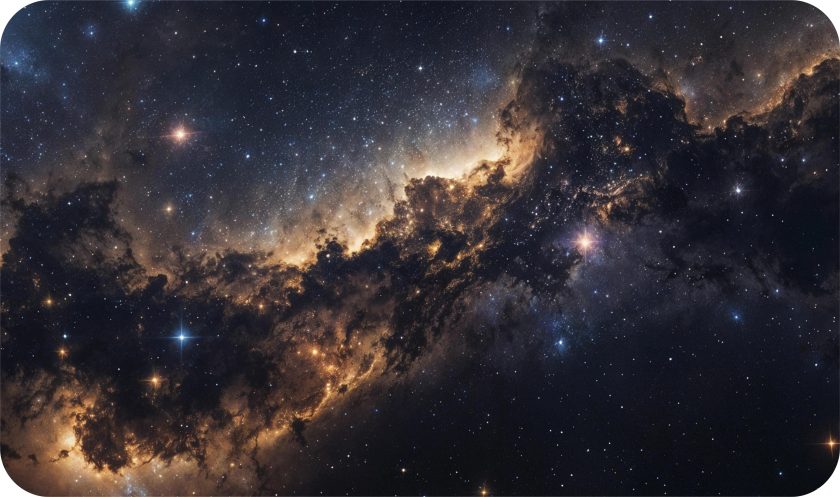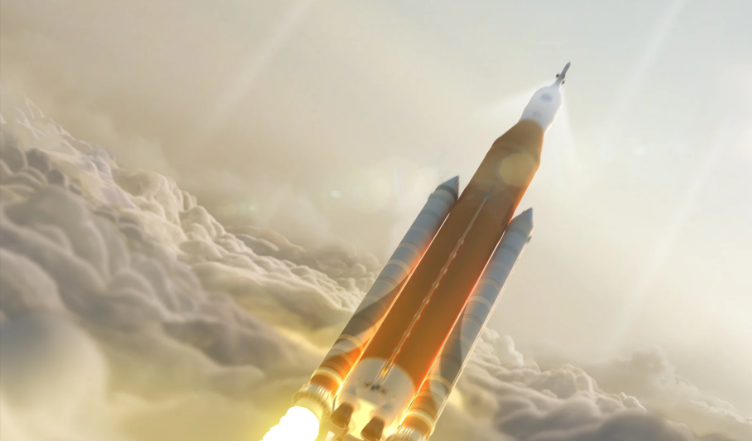
Formation of the first stars in the universe and the evolution of black holes have always been a mystery to astrophysicists. Now, observations from NASA’s James Webb Space Telescope (JWST) may offer a radical new answer to the existence of “dark stars”.
JWST scientists discovered three unusual astronomical objects that appear consistent with dark star models. These objects do not look like normal stars or galaxies, rather they might match predictions for dark stars, a type of object scientists have only theorized about until now.
If we go by the terminology, well, these objects are certainly not dark, in fact, they are expected to be highly luminous. And it is also difficult to classify them as stars due to their sheer size.
The “dark” element refers to the power source that makes them shine, which happens to be a mysterious substance known as dark matter.
What is Dark Matter?
Dark matter is a substance that makes up about 27% of the universe. Scientists have never directly observed it, however, they have observed its effects via gravitational pull.
Unlike ordinary matter, dark matter is thought to be made up of electrically neutral particles, which means it cannot interact with electromagnetic waves (like light, radio, or infrared) in the way we typically observe objects.
Many researchers think dark matter particles can destroy each other when they collide. A core model suggests that dark matter particles are their own antiparticles. So, when a particle and its antiparticle meet, they annihilate each other in a burst of pure energy.
In the dense environment of the early universe, dark matter particles would have collided and annihilated frequently. This annihilation is what makes the dark star shine or stay stable.
Inside of a Dark Star
In the early universe, clouds of hydrogen and helium gas began to collapse under gravity. Normally, this collapse heats the gas until nuclear fusion starts, creating a regular star.
But in a dark star:
- Large amounts of dark matter sit inside the gas cloud
- Dark matter particles collide and annihilate
- The released energy heats the gas
This heat stops the gas from collapsing enough to start fusion.
So instead of a normal star, you get a dark star, which shines because of dark matter energy, not fusion.
How do Astronomers Spot a Dark Star?
The unique mechanism behind their shine,
The unique mechanism behind dark stars causes them to display several distinctive characteristics that astronomers look for, such as:
1. Extremely Old (High Redshift): They formed very early in the universe’s history. Because the universe is expanding, their light looks very red when it reaches us and so it’s called redshift.
2. Huge and Bright: Dark stars may be much larger than normal stars, possibly thousands or even millions of times more massive than the Sun. Even though their surfaces are cooler, their enormous size makes them very bright.
3. Simple Chemical Makeup: Normal stars turn hydrogen into helium and then into heavier elements. Dark stars do not do this. Scientists expect them to contain mostly hydrogen and helium, with very little of heavier elements like oxygen.

Researchers also noticed one key clue, that is, unusually high levels of helium, which may be a strong sign of dark star activity.
Dark Stars and Supermassive Black Holes
Beyond explaining the first light in the cosmos, the dark star theory also provides an explanation for the rapid formation of supermassive black holes.
So, what happens when a dark star runs out of dark matter?
- Small dark stars may become normal stars
- Very large dark stars may collapse directly into black holes
These black holes would already be massive, helping explain how some galaxies contain huge black holes only a few hundred million years after the universe began.
One example is a black hole found in the galaxy UHZ-1, which formed just 500 million years after the Big Bang and is nearly 10 million times the mass of the Sun.
Bright Spots or Distant Galaxies?
Although the evidence gathered by JWST is very convincing, not everyone agrees that these dark stars exist. These objects could actually be just very strange, very bright galaxies. Some scientists think that the big stars we see could simply be normal stars getting bigger by pulling in more gas and dust from their surroundings. Also, the current data from JWST might not be enough to tell the difference between really large, hot stars and these cooler, less dense dark stars.
It’s like you’re looking at a city from a distance at night. You see a bright, large light in the sky. Some might think it’s a new, very bright building (a dark star), but it could also be a cluster of smaller, active traffic lights (ordinary galaxies) blinking in a pattern that makes it look like a single, large light. Scientists are trying to figure out if it’s an unusual building or just a bunch of traffic lights together.
FAQs About Dark Stars and JWST Discoveries
1. What are dark stars, and how are they different from normal stars?
Dark stars are a theoretical type of early-universe star powered by dark matter annihilation instead of nuclear fusion. Unlike normal stars, they are much larger, cooler at the surface, and have a very simple chemical composition.
2. Has NASA’s James Webb Space Telescope actually found dark stars?
NASA’s James Webb Space Telescope (JWST) has identified several unusually bright, high-redshift objects that match predictions for dark stars. However, scientists have not yet confirmed them, and more data is needed before they can be officially classified as dark stars.
3. Why do dark stars appear so bright if they are “dark”?
The word “dark” refers to their power source, not their appearance. Dark stars are expected to be extremely luminous because energy released from dark matter annihilation heats the surrounding gas, causing the star to shine brightly.
4. Could these objects just be young galaxies instead of dark stars?
Yes. Some astronomers believe the objects seen by JWST may actually be compact, rapidly forming galaxies or large normal stars growing by pulling in surrounding gas and dust. Current observations may not be detailed enough to clearly tell the difference.
5. How do dark stars help explain the formation of supermassive black holes?
If very large dark stars run out of dark matter, they could collapse directly into massive black holes. This could explain how supermassive black holes formed so quickly in the early universe, just a few hundred million years after the Big Bang.
6. Why are dark stars important to our understanding of the early universe?
Dark stars could reveal how the first sources of light formed, how dark matter behaves, and how early structure, like galaxies and black holes, developed. Confirming their existence would change our understanding of cosmic evolution.
Credit: Phys.org



